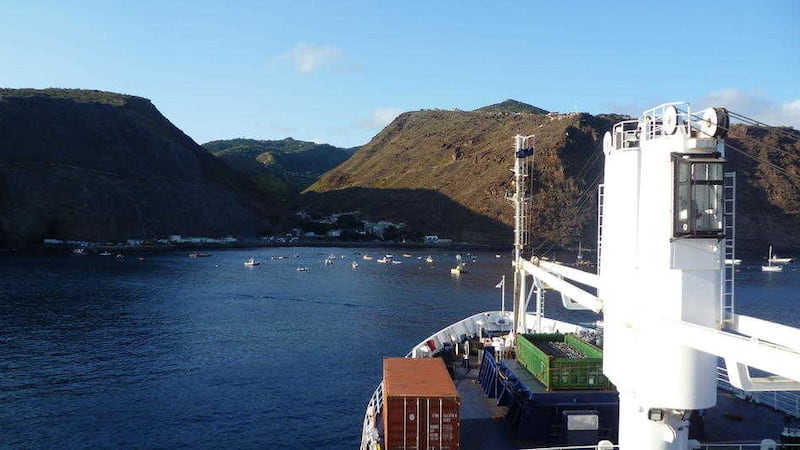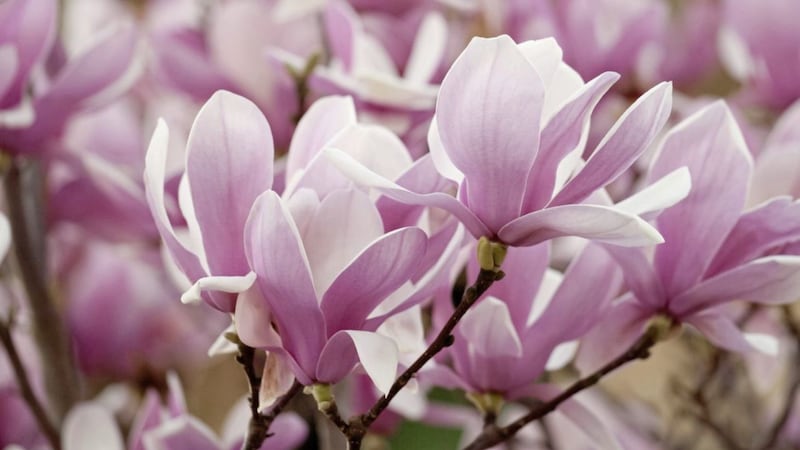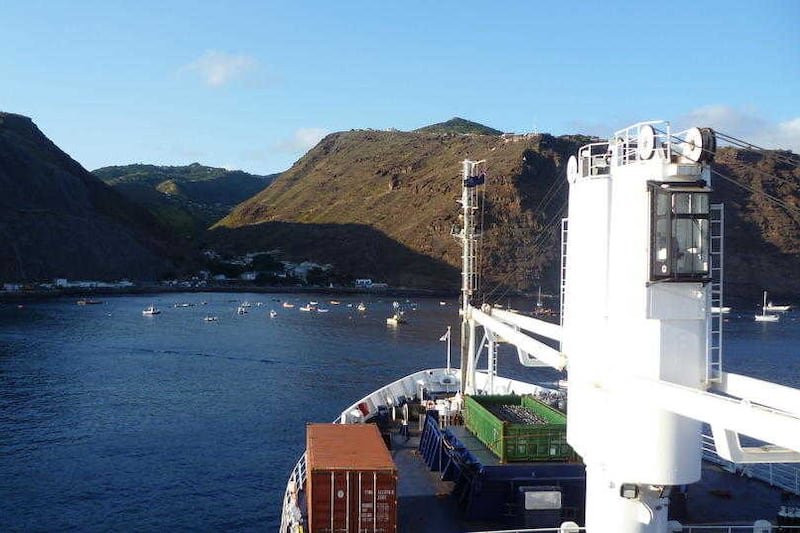"WE'S a gonna welcome lots from France," a cheery Saint (the affectionate name given to island residents) declares in his colloquial local lingo.
We're discussing the impact the new airport will have on St Helena when the first flights arrive this year. No exact date has been confirmed, but the government say it will likely be end of May.
I've already spent a few days on the remote island and realised change happens slowly on this tiny speck of land surrounded by the South Atlantic, which was discovered by the Portuguese 500 years ago.
Mobile phones finally arrived last year, and there's intermittent internet reception in some houses. But the local government hopes the pace of change will quicken when the first plane touches down.
The plan is for tourism to fuel economic development and my new friend is referring to the cavalcade of Napoleon enthusiasts expected to make the pilgrimage here over the next six years, as the Saints commemorate two centuries since the self-declared French emperor lived and died there.
St Helena's steep cliffs and rocky outcrops made it a perfect location for Britain to send its worst enemies, and thus Napoleon was exiled to the South Atlantic in 1815. Much of his life on the island was under a somewhat relaxed form of home detention in Longwood House, but his first abode was the Briars Pavilion on the estate of the Balcombe family, which is where I begin my Napoleonic tour.
He developed a kinship with Elizabeth 'Betsy' Balcombe, the 14-year-old daughter of William Balcombe, while there. Her French was perfect and she helped soften Napoleon's introduction to his new surrounds.
But their friendship was only short, as Napoleon adopted a more morose demeanour when he was moved to Longwood House a few weeks later, and kept under military guard.
"It's not true he died on his billiards table," my wonderfully informed tour guide, Ivy, explains, as we begin our walk through the property. "He never played on it either," she adds with a smile.
He died at the age of 51 in the adjacent room, most likely of stomach cancer, Ivy tells me - not arsenic poisoning as some theorists believe. Days later he was buried on a hillside beneath Longwood.
It's the third site on my tour. Down a grassy path to a tranquil nook, the ghostly silence around his tomb is broken only by the rustling of banana trees and nearby birdsong. Napoleon was so taken with the peacefulness of the location while passing on horseback that he himself declared it would be his final resting place.
It's a beautiful place to reflect, and I'm reminded of the sunny and slow days on the deck of the RMS St Helena, the last of the Royal Mail ships, on my voyage to the remote island.
It is St Helena's lifeline, transporting not just people but cars, fridges, doors, food, pets and anything else Saints need on its monthly trip from Cape Town. There is no industry on St Helena; everything must be brought in, so a gander at the ship's manifest is like a voyeuristic gaze into island life.
Life on board is a throw back to 1950s travel, with formal dress expected at dinners, games of quoits and skittles on the deck, and plenty of hours spent lazing about in lounge chairs, staring out across an unbroken sea and chatting to new friends.
All of that will be replaced when the five-day sea journey makes way for a weekly four-hour flight from Johannesburg, denying passengers the chance to slow themselves to the way of life on St Helena.
The airport will, however, open the island's natural beauty to a greater number of visitors, and the local government hopes it will spark economic development, which flatlined decades ago.
Visitors expecting seaside resorts and glistening sandy beaches on this tropical island will be sorely disappointed, but I discover a surprisingly varied and seductive landscape during my 4x4 drive along the windy roads that snake up, down and across the island.
Kaleidoscopically colourful volcanic land becomes a majestic eucalyptus plantation, which melds into dense rainforest as I reach the island's cloud-covered spine.
I join local walking enthusiast Valerie Joshua for the brisk hike up to the island's highest point. At 818m, Diana's Peak sits in the middle of the local three peaks challenge that includes Cuckold's Point and Mount Actaeon.
Valerie introduces me to tiny blushing snails, cabbage plants and other indigenous life. One third of endemic species in the UK and its territories are found on St Helena, but much of it is under threat.
The island's proximity made it a vital outpost on trade routes from the East for three centuries and in its heyday, more than 1,000 ships would dock at Jamestown, the capital, each year.
With them came cats and rats, which continue to decimate the island's ground nesting 'wirebird' population. There have been attempts to control the many introduced species, but eradication programmes are difficult to implement.
As St Helena National Trust director, Jeremy Harris, explains: "If we get rid of the cats, then the rats boom."
So for now, the island's environment survives in a delicate balance. It's hoped that small-scale sustainable tourism won't have a detrimental impact.
The pleasantness of life on St Helena is most evident in Jamestown. Everyone knows everyone. For an island so detached, I feel warmly close to the community in which I'm spending a week.
You cannot disappear into the crowd on St Helena, as there isn't much of one. Only 4,000 people live on the island, waving from their cars as you stroll along the street and asking with genuine interest, "How's you doing?"
For my last dinner on the island, I'm invited to Derek and Linda Richard's house, where they teach me how to make the local delicacy, tuna fish cakes. During the day they run the Sandwich Shop close to the waterfront in Jamestown, and they hope to soon add accommodation to their house through a government grant, turning it into a culinary school bed and breakfast.
Over dinner we discuss new restaurants ideas, St Helena's natural beauty, football, and the local coffee, which is renowned as one of the purest strains in the world. But three bad seasons have seen stocks dwindle to barely a cup, meaning I've struggled to find any to take home as a souvenir.
Derek disappears into his kitchen and returns with a packet, offering it to me without hesitation.
I'm momentarily stumped by his generosity, knowing 100g of the delicacy would set me back £60 in London. Then I realise there's only one thing I can really say.
"Thank you very much," I begin as we shake hands. "You're a saint."
TRAVEL FACTS
:: Halcyon Travel Collections (020 7193 2363; halcyon-collections.com) offers a year-round seven-night 'Island Explorer' package on St Helena from £890pp (two sharing) including seven nights' B&B accommodation, five days' car rental, full day 4WD excursion, guided walking tour of Jamestown, Napoleonic tour and half-day wildlife cruise.
:: St Helena's airport is scheduled to open on May 21. Flights from London to St Helena via Johannesburg with BA and Comair are expected to start from around £1,500pp.
:: For further information on visiting St Helena, see www.sthelenatourism.com.



